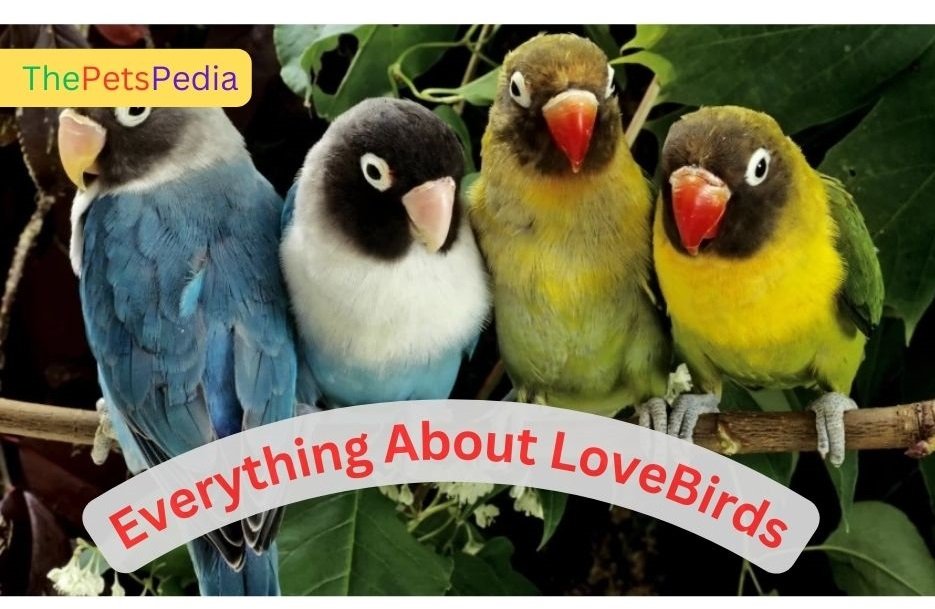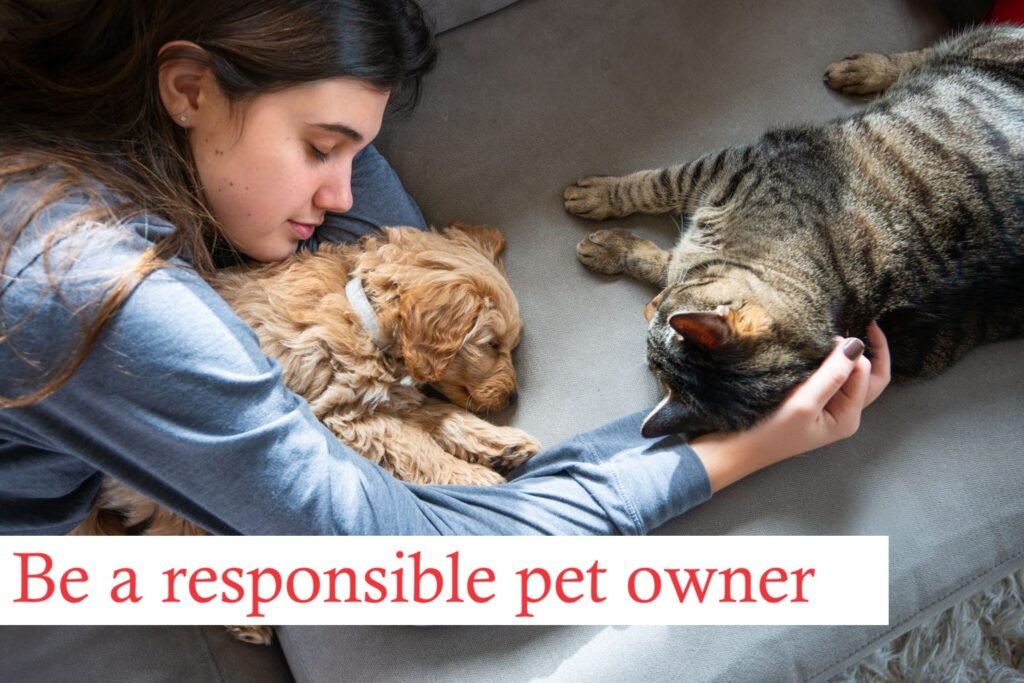Lovebirds are some of the most charming and affectionate pet birds worldwide. These birds make delightful pets with vibrant colors, playful personalities, and deep bonds with their human companions. Whether you’re considering adding one to your family or are already a proud owner, this guide covers everything you need to know—from their history to their care and behavior.
A Brief History of the Lovebird
Members of the genus Agapornis, these small parrots are native to the African continent, except for the Madagascar lovebird (Agapornis canus), which originates from the island of Madagascar. These birds have a rich history dating back thousands of years. Named for their strong pair bonds and affectionate behavior toward their mates, these parrots maintain their close relationships for life.
The first lovebirds were brought to Europe in the late 19th century, quickly gaining popularity due to their striking appearance and engaging personalities. They are beloved pets worldwide, cherished for their vibrant colors, playful antics, and loving nature.
Physical Characteristics
| Feature | Description |
| Size and Weight | 5 to 7 inches in length; 1.5 to 2 ounces |
| Color Varieties | Green, peach-faced, blue, yellow, and a variety of mutations |
| Wingspan | 9 to 10 inches |
| Beak and Feet | Strong, curved beak; zygodactyl feet (two toes forward, two toes backward) |
These small yet sturdy birds have a compact, athletic build. They display a stunning array of colors depending on the species and mutations. The most common species kept as pets include the Peach-faced lovebird, Fischer’s lovebird, and Masked lovebird. Each species boasts unique color patterns and characteristics.
Temperament and Personality
Known for their energetic and affectionate personalities, these little parrots are curious and playful and thrive on interaction with their owners and other birds.
- Social Nature: Highly social, they enjoy being in the company of their human caretakers or other birds. They love to chirp, play with toys, and even snuggle with their favorite person.
- Playful and Curious, they are Active explorers who enjoy investigating their surroundings and playing with toys, especially ones that can be shredded or chewed.
- Strong Bonding: True to their name, Lovebirds form deep bonds with their mates and owners. They often sit close to their chosen companion, preening and cuddling.
- Mischievous Behavior: Known for their antics, these parrots love to explore. Their curious nature means they will get into anything they can. Proper supervision and a safe environment are vital to keeping them out of trouble.
Health and Lifespan
| Aspect | Details |
| Common Health Issues | Respiratory infections, feather plucking, mites, obesity |
| Preventive Care | Regular vet check-ups, balanced diet, stress-free environment |
| Lifespan | 10 to 15 years with proper care |
With the right care, these birds can live a long and healthy life. Regular veterinary check-ups, a clean environment, and a balanced diet are essential to preventing common health problems.
Housing and Environment
Providing a suitable and enriching environment is crucial for their well-being.
| Environmental Factor | Recommendations |
| Cage Size | A cage at least 18 inches wide, 18 inches deep, and 24 inches high for a single bird |
| Perches and Toys | A variety of perches and toys like ladders, swings, and chewable items to prevent boredom and promote exercise |
| Lighting and Temperature | Well-lit area, avoiding direct sunlight; ideal temperature range between 70°F and 80°F |
| Cleanliness | Clean the cage, food, and water dishes regularly; change the cage liner at least once a week. |
Creating a comfortable and stimulating environment is critical to their physical and emotional health.
Diet and Nutrition Tips
| Food Type | Importance |
| Seed Mixes | Should be supplemented with fresh foods and pellets |
| Pellets | Should make up about 50-60% of the diet for balanced nutrition |
| Fruits and Vegetables | Fresh produce is offered daily; avoid avocado and chocolate |
| Calcium Sources | Cuttlebone or mineral blocks for strong bones and beak health |
| Water | Fresh, clean water is available at all times, changed daily |
A balanced diet is vital for their health. Pellets should be the staple, complemented by fresh fruits and vegetables to provide essential vitamins and minerals.
Common Species and Color Mutations
| Species | Description | Common Color Mutations |
| Peach-faced Lovebird | The most popular species with a bright green body and peach-colored face. | Blue, lutino, pied, albino |
| Fischer’s Lovebird | Native to Tanzania, these birds have a bright green body, a vibrant orange-red face, and a blue lower back. | Blue, white-faced, yellow, violet |
| Masked Lovebird | Known for their black “mask” around the eyes, they have a green body with a blue rump. | Blue, cobalt, lutino, pied |
| Black-cheeked Lovebird | Rare and endangered species with a dark brown head, cheeks, and a green body. | Less common in captivity; few color mutations available |
| Madagascar Lovebird | Native to Madagascar, they have a pale green body with a light grayish-white head and breast. | No known mutations; typically seen in wild-type coloration |
These birds exhibit stunning colors and patterns, making them a visual delight. Each species and mutation offers a unique appearance, adding to the appeal of these charming parrots.
Training and Socialization
These intelligent birds can be trained with patience and consistency.
- Basic Training: Start with simple commands like “step up” to encourage your pet to hop onto your finger. Use treats and praise to reinforce good behavior.
- Socialization: Regular interaction is crucial. Spend time talking to and playing with your Lovebirds daily to build a strong bond.
- Handling: Begin handling gently and gradually. With time, they will learn to trust you and enjoy being held.
Exercise and Activity Needs
Active and playful, these parrots need plenty of opportunities to exercise and explore.
- Out-of-Cage Time: Allow daily time outside the cage in a safe, bird-proofed area. This exercise is essential for their physical and mental health.
- Interactive Play: Engage through games and toys. Lovebirds enjoy puzzles, shredding toys, and anything that challenges their curiosity.
- Social Interaction: Social creatures need regular interaction with their owners or other birds. Provide plenty of attention to keep them happy and healthy.
How to Care for Your Feathered Friend: Major Tips
Proper care is essential to keeping your bird happy and healthy.
- Regular Vet Visits: Schedule annual check-ups with an avian vet to catch potential health issues early.
- Grooming: These birds usually keep themselves clean but may enjoy a mist bath or a shallow dish of water. Keep their nails trimmed and monitor their beak and feather condition.
- Mental Stimulation: Regularly introduce new toys and rotate them to engage your pet mentally. Boredom can lead to behavioral issues like feather plucking.
Why They Make Great Pets
These small parrots are ideal companions for those who want a lively and affectionate feathered friend.
- Small Size: Compact and don’t require as much space as larger parrot species, making them perfect for smaller homes or apartments.
- Interactive and Playful: Lovebirds have big personalities in small bodies. They are highly interactive and can provide hours of entertainment.
- Affectionate Nature: They are known for their strong bonds with their owners. They enjoy spending time with their human companions and can become very loving.
- Variety of Colors: With their vibrant colors and different species, they are beautiful and make a striking addition to any household.
Fun Facts About These Colorful Birds
- Name Origin: Lovebirds are named because of the strong pair bonds they form. They often sit closely together, pray, and show affection to their mate.
- Communication: They are vocal and use a range of chirps and calls to communicate with their flock and human companions.
- Agile Fliers: Despite their small size, they are strong fliers. They can quickly navigate through small spaces with agility and grace.
Final Thoughts
These parrots are not only beautiful and entertaining; they are also intelligent and affectionate pets. Whether you’re drawn to their playful nature, vibrant colors, or loving bond with their mates, these feathered friends make excellent companions for those willing to invest time and care. You’ll be rewarded with a lively and loyal bird that brings joy to your home. This guide has covered everything you need to know about Lovebirds, from their history and physical traits to their care and training. Here’s to a long and happy relationship with your charming little companion!



